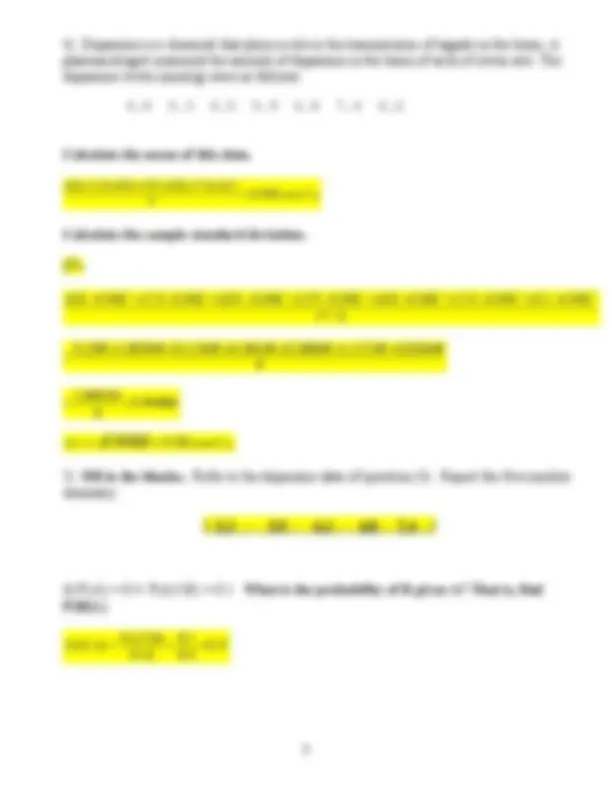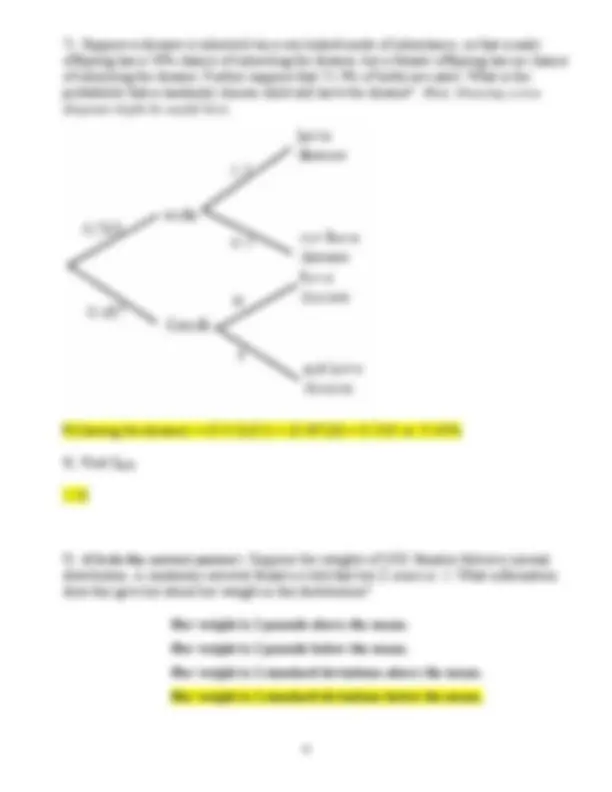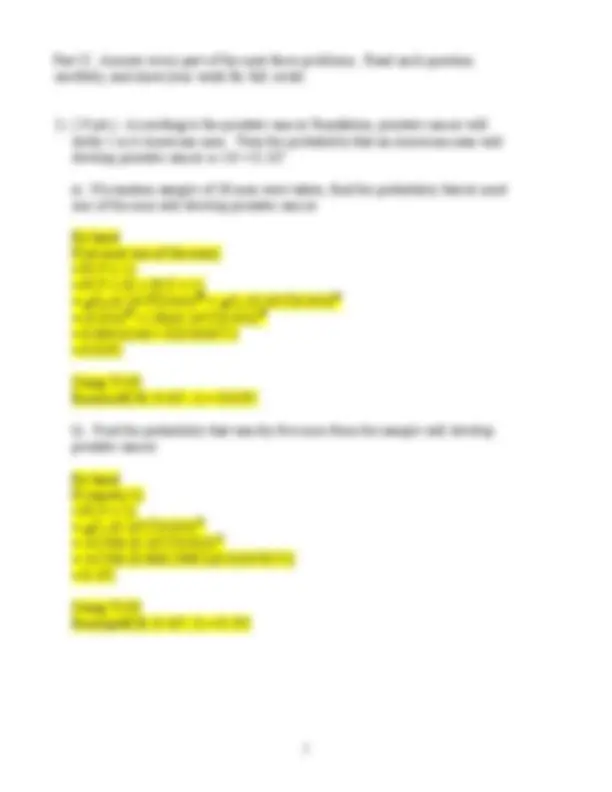





Study with the several resources on Docsity

Earn points by helping other students or get them with a premium plan


Prepare for your exams
Study with the several resources on Docsity

Earn points to download
Earn points by helping other students or get them with a premium plan
Community
Ask the community for help and clear up your study doubts
Discover the best universities in your country according to Docsity users
Free resources
Download our free guides on studying techniques, anxiety management strategies, and thesis advice from Docsity tutors
This is the Exam Key of Applications of Statistics which includes Variable, Researcher, Type of Variable, Observational Unit, Sample Size, Dendritic Branches, Emanating, Humans and Animals, Disease etc. Key important points are: Variable, Researcher, Type of Variable, Observational Unit, Sample Size, Dendritic Branches, Emanating, Humans and Animals, Disease, Blood
Typology: Exams
1 / 7

This page cannot be seen from the preview
Don't miss anything!




2
2
1
−
=
n
y (^) i y
n
i
2
2
2
2
j
n-j
2
Part I: Answer eight of the following nine questions. If you complete more than eight, I
will grade only the first eight. Five points each.
from a nerve cell taken from the brains of 36 newborn guinea pigs.
Variable __ number of dendritic braches ______________________
Type of Variable__quantitative - discrete_____________________
Observational Unit_nerve cell from brain of newborn guinea pig_
Sample Size__36__________________________________________
study of trypanosome morphology, researchers measured the lengths (in μm) of 500
individual trypanosomes taken from the blood of a rat. These data were used to create the
following histogram.
Using the histogram, describe the shape of the
distribution of these trypanosome lengths.
Asymmetric and bimodal
within 1 SD (68%), 2 SDs (95%), and 3 SDs (99.7%) of the mean. Could the empirical
rule be used for the trypanosome data from question (2)? Why or why not?
The empirical rule requires that the distribution be unimodal and not too skewed. The
histogram of trypanosome length shows these requirements are not met.
offspring has a 50% chance of inheriting the disease, but a female offspring has no chance
of inheriting the disease. Further suppose that 51.3% of births are male. What is the
probability that a randomly chosen child will have the disease? Hint: Drawing a tree
diagram might be useful here.
Pr{having the disease} = (0.513)(0.5) + (0.487)(0) = 0.2565 or 25.65%
distribution. A randomly selected female is told that her Z-score is -2. What information
does this give her about her weight in this distribution?
Her weight is 2 pounds above the mean.
Her weight is 2 pounds below the mean.
Her weight is 2 standard deviations above the mean.
Her weight is 2 standard deviations below the mean.
Part II: Answer every part of the next three problems. Read each question
carefully, and show your work for full credit.
strike 1 in 6 American men. Then the probability that an American man will
develop prostate cancer is 1/6 = 0.167.
a) If a random sample of 30 men were taken, find the probability that at most
one of the men will develop prostate cancer.
By hand
P{at most one of the men}
= P{Y ≤ 1}
= P{Y = 0} + P{Y = 1}
= 30 C 0 (0.167)
0 (0.833)
30
1 (0.833)
29
= (0.833)
30
1 (0.833)
29
= 0.00416246 + 0.
= 0.
Using TI-
Binomcdf(30, 0.167, 1) = 0.
b) Find the probability that exactly five men from the sample will develop
prostate cancer.
By hand
P{exactly 5}
= P{Y = 5}
= 30 C 5 (0.167)
5 (0.833)
25
= 142506 (0.167)
5 (0.833)
25
= 142506 (0.000129892)(0.010378272)
= 0.
Using TI-
Binompdf(30, 0.167, 5) = 0.
identical twins to conduct research. A book by Susan Farber ( Identical Twins Reared Apart ,
New York: Basic Books, 1981) contains a chronicle and reanalysis of identical twins reared
apart. One question of interest is whether there are significant differences in the IQ scores of
identical twins where one member of the pair is reared by natural parents and the other is
not.
A random sample of 32 sets of twins under the above circumstances was taken. The
researcher is hoping to use a statistical test which requires the assumption of the data
coming from a normal population. Using the QQplot below, discuss whether this
assumption appears to be met or violated and why.
When answering this question, keep in mind that I care more about how you reach your
decision, than the actual decision itself. Two to four sentences should suffice…
Overall, this plot looks fairly linear. I do see that the points go above the line at
the high end of the distribution (i.e. the observations are higher than what we
would expect if they came from a normal distribution) and go below the line at the
low end of the distribution (similarly, are lower than we’d expect from a normal).
But the deviation is slight and the points end up going back to the line. Hence, I
see little evidence that these points do not come from a normal distribution.